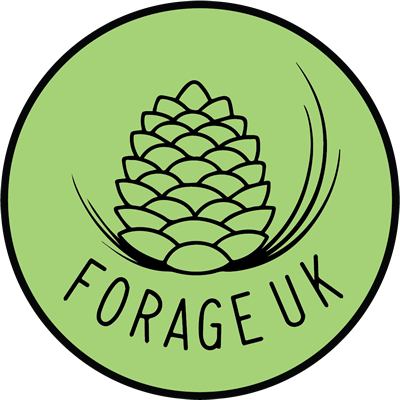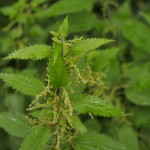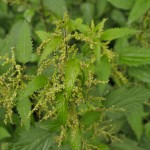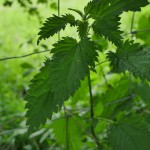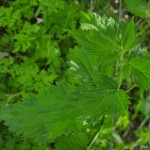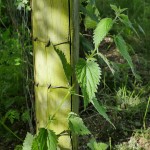Stinging Nettle
Common Names: Stinging nettle, stinger, nettle, burn hazel, burn weed
Scientific Name: Urtica dioica
Description
Nettle is a perennial plant that is very common in the UK and can be found growing almost everywhere usually in large patches. The leaves are soft green and strongly serrated, tear drop shaped and they appear oppositely on the stem and are covered with small stinging hairs called trichomes. These hairs can also be found on the fibrous green, sometimes purple stems and when touched act like a hypodermic needle that inject several chemicals that leave you with a painful stinging sensation. They can grow up to one and a half metres tall. This is one of the most nutritious plants that I know of, but it is not eaten by livestock or wildlife due to its sting, this has protected its existence and why it is so prolific and wildly available.
Habitat
This can be found almost everywhere, hedgerows, woodlands, roadsides, gardens, waste ground and grasslands. The nettle likes damp nitrogen rich soils.
Uses
The nettle has been used throughout history in many ancient societies for medicine, textiles and is a highly nutritious food plant. It is a great source of protein, iron and calcium. It also contains magnesium, potassium, zinc, vitamins A and B and four times more vitamin C than an orange. The taste could be compared to that of spinach with hints of cucumber. I only use the fresh young green tops, up to six inches, of the plant in the spring and early summer before they have flowered. Once flowered between June and October the leaves develop gritty particles, called Cystoliths that can irritate the urinary tract, so best avoided at this time. The leaves and flowers can be used as herbal tea, the leaves for soup and pesto, crisps, nettle cordial and beer and can be added to many dishes.
Medicinal
Nettles are an effective diuretic and can help the bottle eliminate toxins, therefore great for kidney health. It can be used to breakdown stones in the Gallbladder and it is an antioxidant that has been used to treat arthritis, reduce inflammation, lower blood pressure and increase circulation and energy levels. It can help with menstruation, strengthen bones and has been proven to improve prostrate health, prevent prostrate growth and alleviate symptoms. URTIFICATION- the act of applying the stings to oneself, was also used to treat many ailments
I could go on and on about how fantastic this plant it. The is one of the most important nutrient loaded plants I believe that we are lucky enough to have.
Other Facts
Nettle stems have been used to make clothing for over two thousand years. In both the world wars nettles were used to make fibre and or dye for camouflage uniforms. The German army uniforms were almost all made of this fibre in World War one because of a cotton shortage.
It is able to establish itself after fire. It is one of the first plants to reappear which is maybe how it got its name, burn hazel and burn weed, or it may be the sensation it gives you when touched, Urtica- meaning to burn. Urtification- to sting oneself.
It was thought to burn nettles in a thunder storm that you would be protected from lightening.
Cooking the plant removes the sting and allows them to be eaten and handled without injury.
